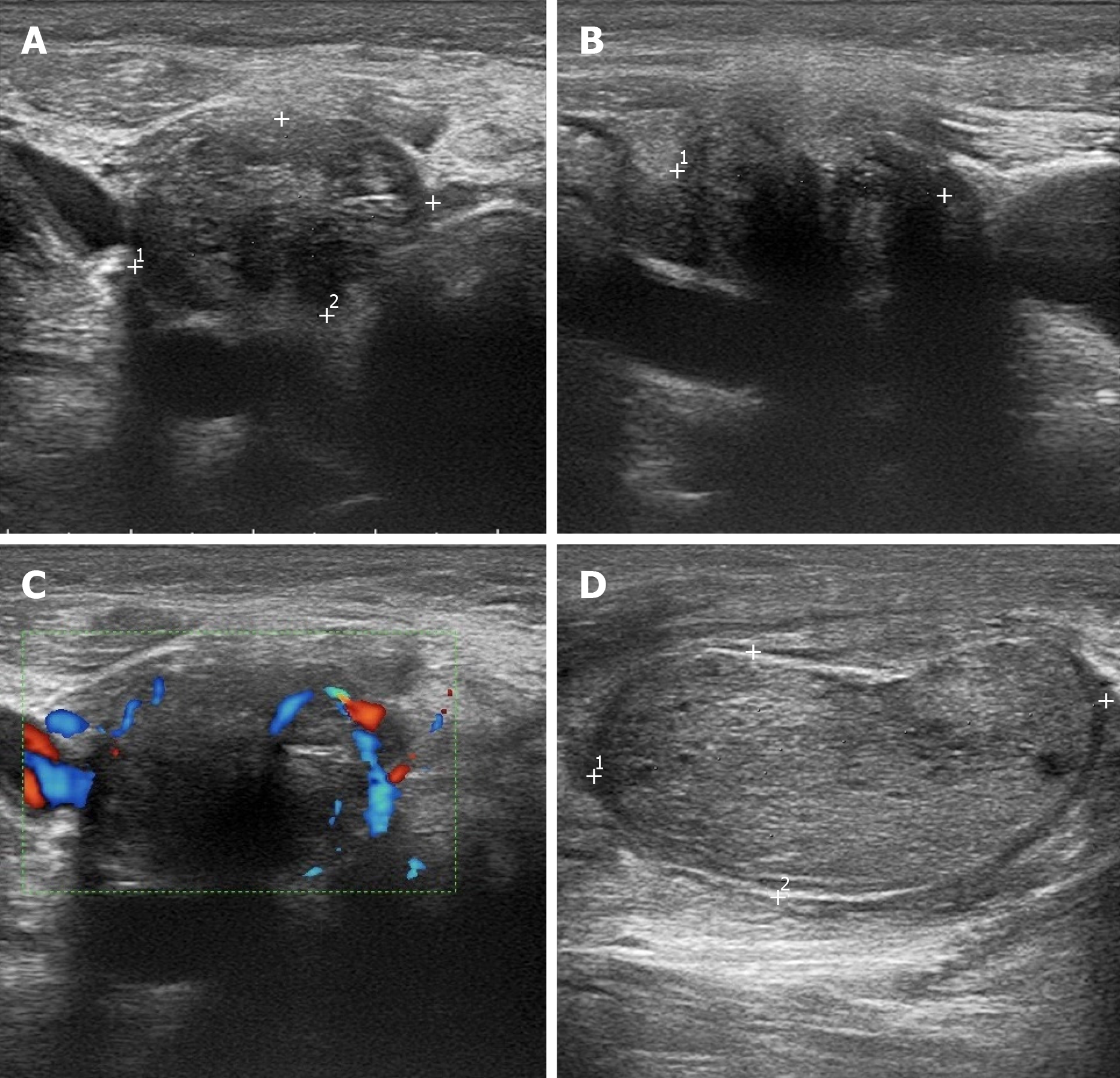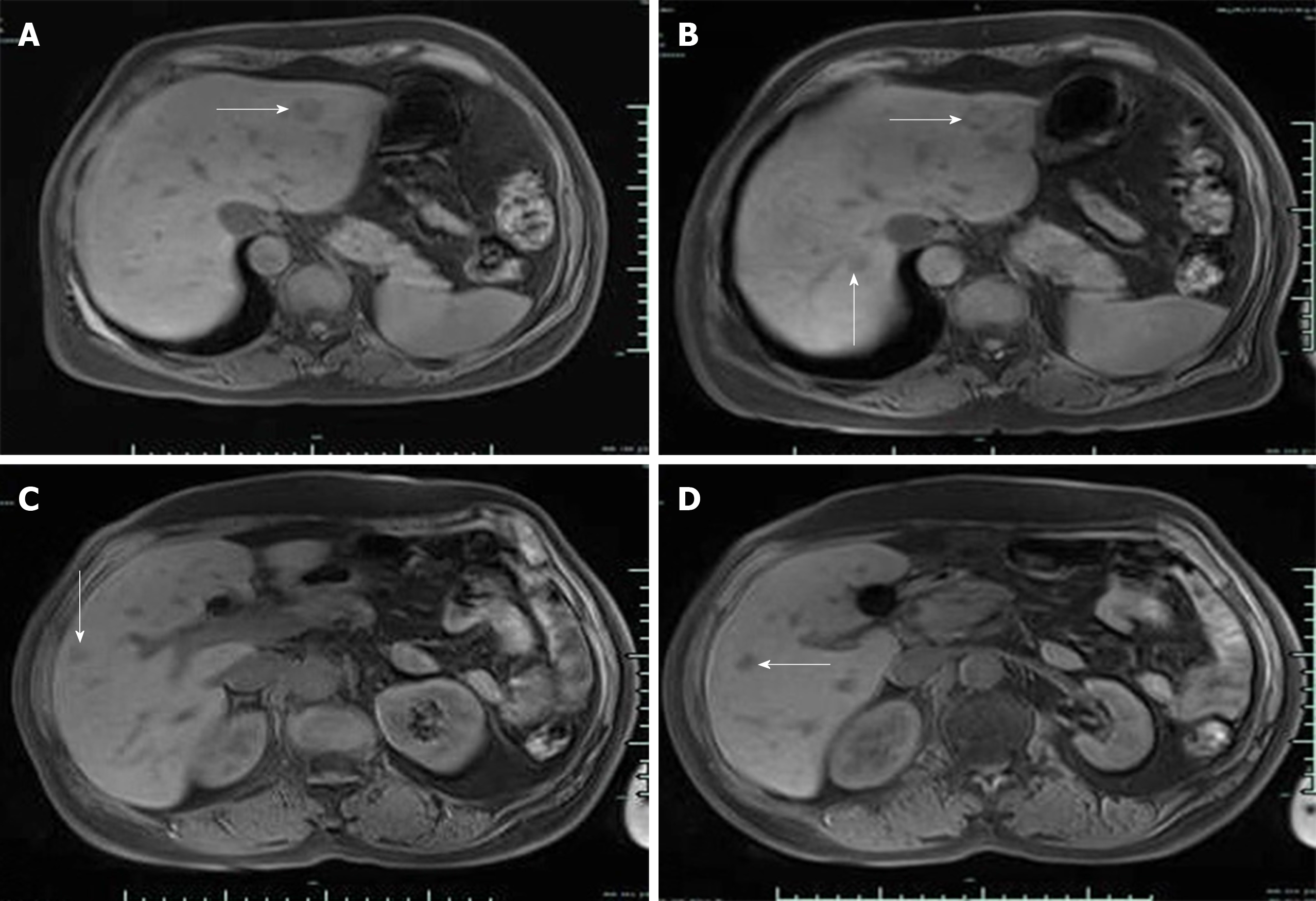Copyright
©The Author(s) 2020.
World J Clin Cases. Jan 6, 2020; 8(1): 179-187
Published online Jan 6, 2020. doi: 10.12998/wjcc.v8.i1.179
Published online Jan 6, 2020. doi: 10.12998/wjcc.v8.i1.179
Figure 1 Ultrasound images of calcitonin-negative neuroendocrine tumor with cervical lymph node metastases.
A: Cross-sectional image of the thyroid mass with uneven echo; B: Cross-section image of the thyroid gland with the mass invading the thyroid capsule; C: Color Doppler imaging showing abundant blood supply in the mass; D: Swollen cervical lymph node poorly demarcated between cortex and medulla.
Figure 2 Thyroid pathology and immunohistochemistry.
A: Tumor cells are arranged in a beam-shape with obvious cell atypia and thick chromatin (Hematoxylin eosin staining, 200 ×); B: Negative calcitonin staining of tumor cells (Immunohistochemistry (IHC) staining, 200 ×); C: Positive TTF-1 staining of tumor cells (IHC staining, 200 ×); D: Positive CgA staining of tumor cells (IHC staining, 200 ×); E: Positive Syn staining of tumor cells (IHC staining, 200 ×); F: 20% Ki67 staining of tumor cells (IHC staining, 200 ×).
Figure 3 Ultrasound and computed tomography images of liver metastases.
A: Fast-in image of a metastatic tumor in liver; B: Homogeneous and highly enhanced images of metastatic tumors in liver; C: Fast-out image of a metastatic tumor in liver; D: Computed tomography image of hepatic arterial infusion of lipiodol after transcatheter arterial chemoembolization.
Figure 4 Magnetic resonance images of liver metastases.
A: An oval mass in the left liver before transcatheter arterial chemoembolization with a clear boundary and diameter of about 1.9 cm; B, C, D: Magnetic resonance imaging 3 mo after transcatheter arterial chemoembolization revealed no significant reduction in the original metastatic tumor in the left liver and appearance of a new metastatic tumor in the right liver (arrow).
- Citation: Cai HJ, Wang H, Cao N, Huang B, Kong FL, Lu LR, Huang YY, Wang W. Calcitonin-negative neuroendocrine tumor of the thyroid with metastasis to liver-rare presentation of an unusual tumor: A case report and review of literature. World J Clin Cases 2020; 8(1): 179-187
- URL: https://www.wjgnet.com/2307-8960/full/v8/i1/179.htm
- DOI: https://dx.doi.org/10.12998/wjcc.v8.i1.179












